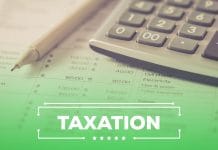Drowning in federal debt feels like treading water in an endless ocean. Every month brings new bills, mounting interest, and the crushing weight of financial stress. If you’re struggling with student loans, tax debt, or other government obligations, you’re not alone—and more importantly, you have options.
The federal debt relief program landscape offers legitimate pathways to reduce, restructure, or even eliminate certain types of government debt. But navigating these programs can feel overwhelming, especially when scammers prey on desperate borrowers with false promises.
This comprehensive guide cuts through the confusion to deliver exactly what you need: clear, actionable information about real federal debt relief programs that can transform your financial future.
What Is a Federal Debt Relief Program?
A federal debt relief program is a government-backed initiative designed to help individuals manage or reduce debt owed to federal agencies. Understanding what debt relief options you qualify for is a big part of getting rid of your debt in 2025, especially as Americans face record-breaking debt levels nationwide.
These programs differ significantly from private debt relief services because they’re administered directly by government agencies like the Department of Education, Internal Revenue Service (IRS), and U.S. Treasury Department. The key advantage? They’re legitimate, regulated, and often free to access.
Types of Federal Debt Covered
Federal debt relief programs typically address:
- Federal student loans (not private education loans)
- IRS tax debt and penalties
- Government-backed mortgages (FHA, VA, USDA loans)
- Small Business Administration (SBA) loans
- Federal employment overpayments
It’s crucial to understand that there are no credit card debt relief government programs for 2025, as credit card debt is considered private consumer debt, not federal obligation.
Who Qualifies for Federal Debt Relief Programs?
Eligibility varies significantly across different programs, but common qualifying factors include:
Income-Based Criteria:
- Low to moderate income levels (typically $25,000-$75,000 annually)
- Financial hardship documentation
- Proof of inability to make current payments
Employment-Based Qualifications:
- Public service employment (teachers, healthcare workers, government employees)
- Military service members and veterans
- Non-profit organization employees
Situational Factors:
- Disability status
- Unemployment or underemployment
- Natural disaster impact
- Economic hardship due to medical expenses
The most important step? Never assume you don’t qualify. Many borrowers miss out on relief simply because they don’t apply, believing their situation doesn’t meet the criteria.
Major Federal Debt Relief Programs
Student Loan Relief Programs
The Department of Education offers multiple student loan debt relief options through studentaid.gov:
Income-Driven Repayment Plans:
- Reduce monthly payments based on family size and income
- Potential loan forgiveness after 20-25 years of qualifying payments
- Four different plan types (IDR, IBR, PAYE, REPAYE)
Public Service Loan Forgiveness (PSLF):
- Complete loan forgiveness after 120 qualifying payments
- Requires full-time employment with qualifying public service employers
- Must be enrolled in Direct Loan program
Teacher Loan Forgiveness:
- Up to $17,500 forgiveness for teachers in low-income schools
- Requires five consecutive years of teaching service
- Specific subject area requirements for maximum forgiveness
IRS Tax Debt Relief
The IRS provides several programs for taxpayers unable to pay their full tax liability:
Offer in Compromise:
- Settle tax debt for less than the full amount owed
- Requires demonstration of financial hardship
- Strict qualification requirements and documentation
Installment Agreements:
- Spread tax payments over time
- Various payment plan options available
- Prevents aggressive collection actions
Currently Not Collectible Status:
- Temporary suspension of collection activities
- For taxpayers experiencing severe financial hardship
- Subject to periodic review and adjustment
Federal Housing Programs
Government-backed mortgage relief includes:
FHA Loss Mitigation:
- Loan modifications for FHA borrowers
- Forbearance options during temporary hardship
- Deed-in-lieu alternatives to foreclosure
VA Loan Assistance:
- Specialized support for veteran borrowers
- Loan assumption and modification options
- Foreclosure avoidance counseling
The Application Process: Step-by-Step Guide
Step 1: Identify Your Debt Type and Servicer
Determine whether your debt is federal or private. For student loans, check the National Student Loan Data System (NSLDS). For tax debt, review your IRS account online.
Step 2: Gather Required Documentation
Common documents include:
- Tax returns (typically 2-3 years)
- Pay stubs and employment verification
- Bank statements
- Proof of expenses and financial hardship
- Loan documentation and payment history
Step 3: Contact the Appropriate Agency
- Student Loans: Federal Student Aid (studentaid.gov)
- Tax Debt: IRS (irs.gov) or authorized tax professionals
- Housing: Your loan servicer or HUD-approved counselor
Step 4: Complete Applications Accurately
Provide complete, truthful information. Missing or incorrect details can delay processing or result in denial.
Step 5: Follow Up and Maintain Communication
Stay in contact with your servicer throughout the process. Response times vary, but persistence is key.
Avoiding Federal Debt Relief Scams
The FTC announced that some companies will be permanently banned from the debt relief industry due to illegal operations targeting vulnerable borrowers. Here’s how to protect yourself:
Red Flags to Watch For:
- Upfront fees before any services are provided
- Guarantees of loan forgiveness or debt elimination
- Pressure tactics requiring immediate decisions
- Requests for Federal Student Aid (FSA) ID or Social Security numbers
- Claims to be affiliated with the government when they’re not
Legitimate Program Characteristics:
- Free applications through official government websites
- No upfront payments for federal programs
- Transparent eligibility requirements and processes
- Official .gov website addresses
- Clear timeline expectations without guarantees
Consider working with credit counseling services if you need guidance navigating the process.
Impact on Your Credit Score
The relationship between federal debt relief and credit scores is complex:
Positive Impacts:
- Successful completion of repayment plans
- Loan consolidation (may improve payment history)
- Avoiding default through proactive relief measures
Potential Negative Impacts:
- Missed payments during application processing
- Loan modifications may be noted on credit reports
- Settlement programs could impact credit ratings
Neutral Impact Programs:
- Income-driven repayment plan enrollment
- Most federal consolidation programs
- Payment deferrals due to approved hardship
The key is maintaining communication with your servicers and making payments as agreed during the relief process.
Alternative Debt Management Strategies
If federal debt relief programs aren’t suitable for your situation, consider these alternatives:
Debt Consolidation
Consolidating multiple debts into a single payment can simplify management and potentially reduce interest rates.
Budget Restructuring
Implementing strategies to cut monthly expenses can free up money for debt payments.
Emergency Fund Building
Having emergency savings prevents future debt accumulation during unexpected financial challenges.
Professional Financial Guidance
Consider consulting with financial advisors who specialize in debt management and federal programs.
State-Specific Considerations
While federal programs maintain consistent eligibility nationwide, some states offer additional resources:
Enhanced State Programs:
- Additional student loan forgiveness for in-state professionals
- State tax debt relief programs
- Enhanced unemployment benefits affecting debt relief eligibility
Regional Support Services:
- State-funded financial counseling
- Legal aid organizations specializing in debt issues
- Community-based assistance programs
Research your state’s specific offerings, as they may complement federal relief programs.
Timeline Expectations and Planning
Typical Processing Times:
| Program Type | Average Processing Time |
| Income-Driven Repayment | 6-8 weeks |
| Public Service Loan Forgiveness | 90-120 days |
| IRS Installment Agreement | 30-60 days |
| Offer in Compromise | 6-24 months |
| FHA Loss Mitigation | 30-90 days |
Planning Considerations:
- Continue making required payments during application review
- Maintain documentation of all communications
- Plan for potential temporary payment adjustments
- Prepare backup strategies if initial applications are denied
Long-Term Financial Health Strategies
Federal debt relief is most effective when combined with comprehensive financial planning:
Building Financial Literacy
Understanding personal finance basics helps prevent future debt accumulation.
Career Development
Pursuing side income opportunities can accelerate debt repayment and build financial stability.
Insurance Protection
Adequate disability insurance protects against future financial hardship.
Retirement Planning
Don’t neglect long-term financial goals while addressing current debt obligations.
Taking Action: Your Next Steps
If you’re struggling with federal debt, take these immediate actions:
- Assess Your Situation: List all federal debts, amounts owed, and current payment status
- Research Eligible Programs: Visit official government websites for your specific debt types
- Gather Documentation: Collect financial records needed for applications
- Apply Promptly: Don’t delay—many programs have specific timing requirements
- Stay Engaged: Maintain regular communication with servicers throughout the process
Remember, federal debt relief programs exist because the government recognizes that overwhelming debt serves no one’s interests. These programs are designed to help citizens regain financial stability while ensuring reasonable repayment of public obligations.
Conclusion
Federal debt relief programs offer genuine hope for Americans struggling with government debt obligations. Whether you’re facing crushing student loan payments, overwhelming tax debt, or other federal obligations, legitimate relief options exist.
The key to success lies in understanding your options, acting promptly, and avoiding the numerous scams that exploit vulnerable borrowers. By working directly with official government agencies and following proper procedures, you can access the relief programs designed to help citizens regain financial stability.
Don’t let debt define your future. Take the first step today by visiting the official government websites for your specific debt type, gathering your documentation, and beginning the application process. Financial freedom isn’t just a dream—it’s an achievable goal with the right knowledge and action.
Your path to debt relief starts with a single decision: the choice to stop struggling alone and start utilizing the resources available to you. Make that choice today.
Ready to explore your debt relief options? Visit Wealthopedia for more comprehensive financial guidance and resources to help you achieve lasting financial stability.

























